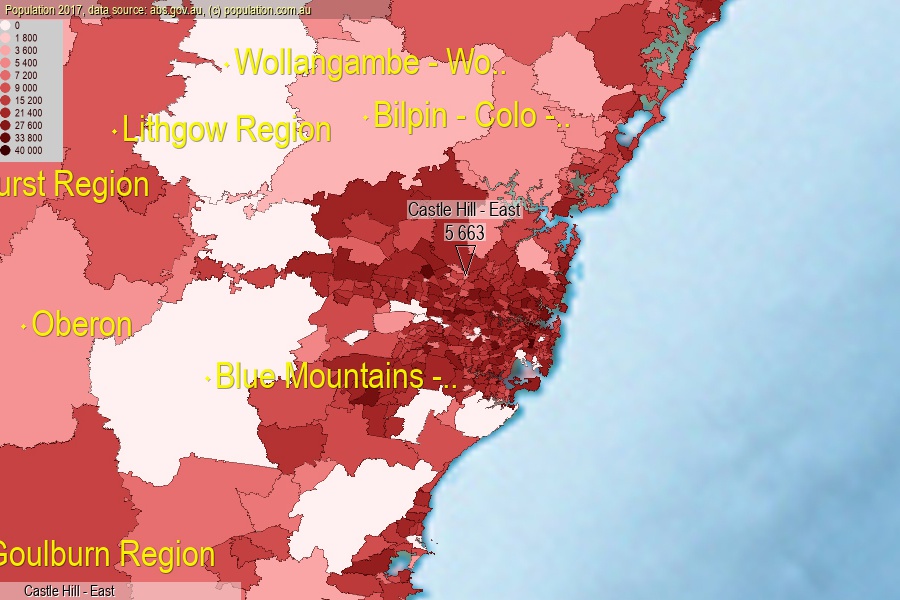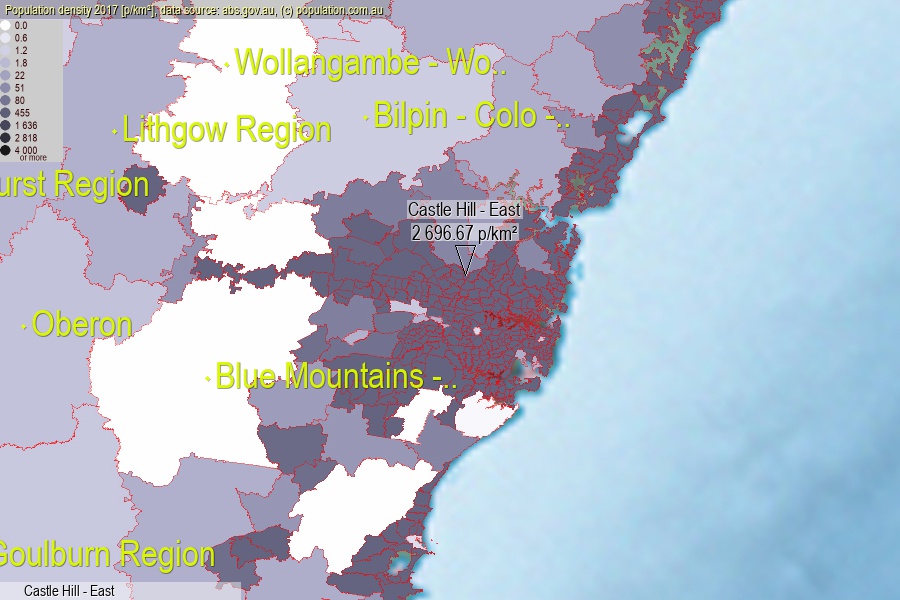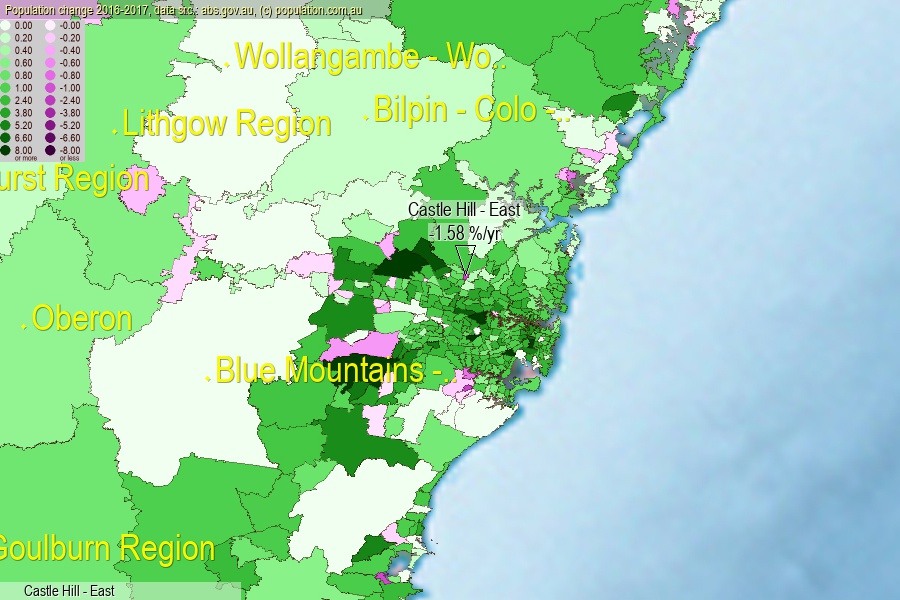 population.com.au
population.com.auLast official estimated population of Castle Hill - East (as Statistical Area Level 2) was 5 663 people (on 2017-06-30)[2]. This was 0.02% of total Australian population and 0.071% of NSW population. Area of Castle Hill - East is 2.10 km², in this year population density was 2 696.67 p/km² . If population growth rate would be same as in period 2016-2017 (-1.58%/yr), Castle Hill - East population in 2025 would be 4 985. [0]



Click to enlarge. Castle Hill - East is located in the center of the images.
Population [people], population density [p./km²] and population change [%/year] [2]
View borders » (new window) [4]
[2001-2002] +0.30 %/Yr.
[2002-2003] +0.38 %/Yr.
[2003-2004] +0.61 %/Yr.
[2004-2005] +0.32 %/Yr.
[2005-2006] +0.72 %/Yr.
[2006-2007] +0.70 %/Yr.
[2007-2008] +0.56 %/Yr.
[2008-2009] +0.38 %/Yr.
[2009-2010] +0.24 %/Yr.
[2010-2011] +0.15 %/Yr.
[2011-2012] -0.14 %/Yr.
[2012-2013] -0.17 %/Yr.
[2013-2014] -0.43 %/Yr.
[2014-2015] -0.19 %/Yr.
[2015-2016] -0.28 %/Yr.
[2016-2017] -1.58 %/Yr.
[0] Calculated with linear interpolation from officially estimated population
[1] Read more about SA2 and Australian Statistical Geography Standard (ASGS) on abs.gov.au
[2] Population data from Australian Bureau of Statistics (Population and density: 2017; change: 2016-2017)
[3] Digital Boundaries: Australian Statistical Geography Standard (ASGS) 2016.
[4] Border coordinates are simplifyed using Ramer-Douglas-Peucker algorithm.